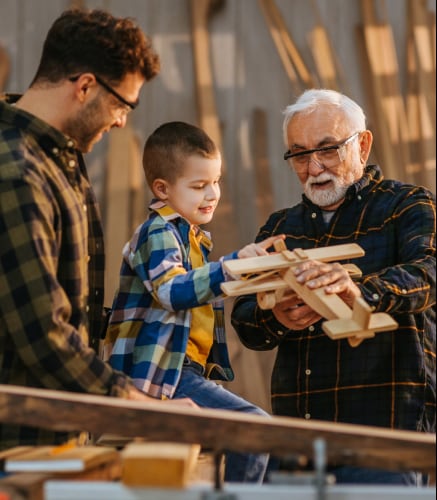Go beyond conventional giving methods to make an impact.
New and innovative giving strategies are changing the face of philanthropy. These strategies are enabling individuals and families to more fully leverage charitable assets and resources to create social benefit. Whether you are just beginning to explore your philanthropic identity or carrying out a family tradition, it helps to consider all of your available options. To assist you, we have summarized six charitable giving and investment solutions that have grown in popularity in recent years.
Impact Investing
Impact investing is an umbrella term used to describe investments that create positive social impact beyond financial return or an investment strategy that intentionally aligns the investments held by an organization, or in its portfolio, with the mission of that organization. Impact investments include most traditional asset classes such as cash deposits, fixed income, loans and loan guarantees among others, and are in a period of transition between being an emerging asset class versus an integrated investment strategy. Sustainability, responsible ownership and explicit diligence on a company’s impact on stakeholders are becoming a standard investment process.
Impact investing has gained traction in recent years due to Millennials’ and Gen Z’s strong commitment to social or sustainable investing and belief that it is possible to invest in for-profit companies that have a positive social or economic impact while also achieving healthy financial returns.
Microfinance
Microfinance is an integrated package of financial services (micro-loans, savings and checking accounts, insurance funds and other basic financial services) for impoverished and low-income individuals who seek to develop small businesses (microenterprises) and self-employment opportunities. These financial services are essential to impoverished individuals, who often lack access to traditional banking products and institutions because they cannot provide the requisite collateral, meet minimum deposit requirements, have no credit histories or are not granted access to banks due to their minority or gender status. Microfinance organizations help poor and financially marginalized individuals move out of poverty, increase their income, become economically self-sufficient and improve their standard of living.
Online microfinance sites allow donors to “choose a borrower” by allowing the donor to read about different entrepreneurs’ stories and learn about their business ideas.
Giving Circles
A giving circle is a group of individuals who agree to pool resources earmarked for charitable giving and decide together which communities or nonprofit organizations will receive their pooled holdings. Giving circles provide an entry point for donors with lower income levels and opportunities for participants to meet others who are also interested in giving. Ranging in size from a handful of members to several hundred, giving circles have become a popular way for younger donors to combine philanthropic resources and essentially “give together” with a network of their peers.
Crowdfunding
Crowdfunding is a form of peer-to-peer fundraising that harnesses the power of social networks to fund a project or cause. Crowdfunding websites allow donors to search profiles and connect with causes of interest to them. Many crowdfunding donors value their personal connection to the projects they support and the ability to highlight causes that might not get as much attention from established charities.
Nonprofit Creation
There are numerous nonprofit organizations doing great work, but many feel more inspired to start a new organization to help serve their community. Starting and sustaining a nonprofit organization — while not an easy task — is a noble commitment and often spurs innovative solutions to social problems.
Activism
Taking action to affect social change can occur in a variety of ways and can take on many forms. While not new, activism has increased in recent years in the midst of a widening economic and political divide, as millions of Americans are organizing in their communities, workplaces and voting booths to have their voices heard and their values upheld. Younger people from across the country are building movements and organizing around causes such as the environment, gun control, sexual harassment and women’s rights.



